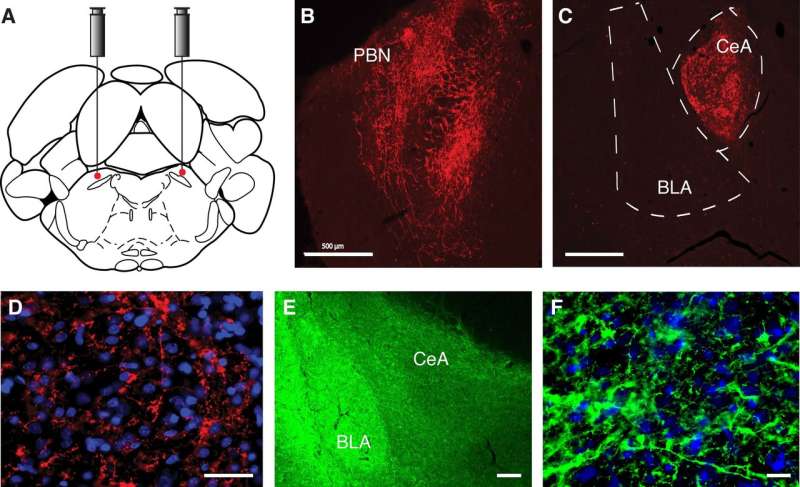Two pathways in the brain converging at the amygdala regulate the anxiety and depression that often accompanies chronic pain, suggests research in male rats published in JNeurosci. One of these pathways may represent a top-down mechanism that controls negative emotion under stress. Credit: Cai et al., JNeurosci (2018)
Two pathways in the brain converging at the amygdala regulate the anxiety and depression that often accompanies chronic pain, suggests research in male rats published in JNeurosci. One of these pathways may represent a top-down mechanism that controls negative emotion under stress.
Using optogenetic stimulation, Zhizhong Pan and colleagues identify two opposing neural pathways—one that carries pain signals from the parabrachial nucleus to the central nucleus of amygdala (PBN-CeA) and another from the basolateral amygdala to CeA (BLA-CeA)—that integrate negative and positive emotion.
Activating the PBN-CeA circuit generated anxiety- and depression-like behaviors in rats, even in the absence of physical pain, while activating the BLA-CeA counteracted each of these behaviors. These new insights into the complex relationship between pain and emotion may help to improve treatment of neuropsychiatric disorders that develop in patients suffering from chronic pain.
More information: Brain circuits mediating opposing effects on emotion and pain, JNeurosci (2018). DOI: 10.1523/JNEUROSCI.2780-17.2018
Journal information: Journal of Neuroscience
Provided by Society for Neuroscience
























